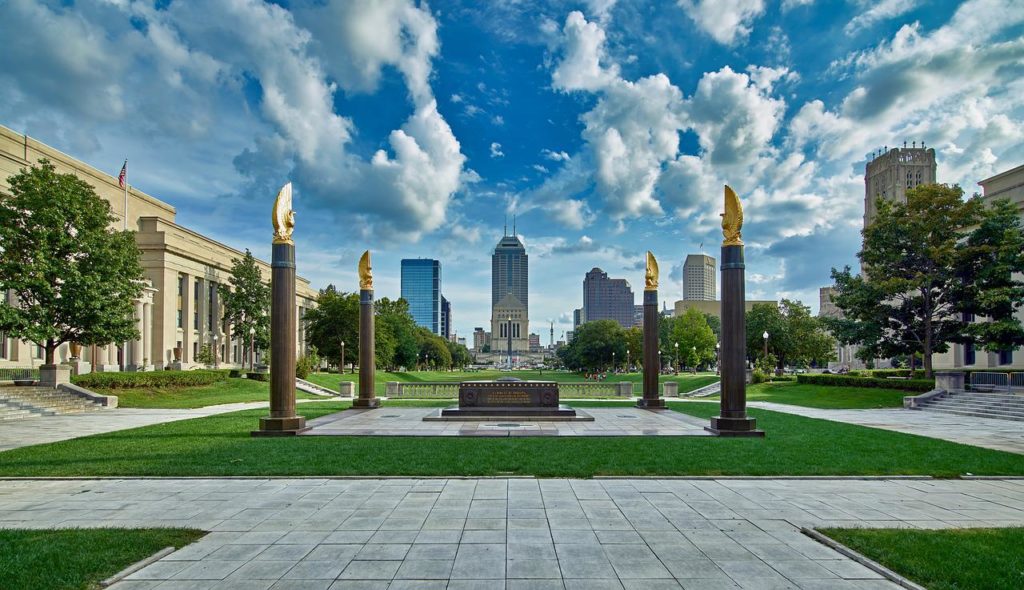
Article Summary: National Parks Near Indianapolis
National Parks Near Indianapolis! There’s so much more to the Hoosier State than the Indy 500. In this article, More Than Just Parks gives you some exciting vacation destinations within a day’s drive of Indianapolis.
I’ve been to so many of these amazing places since retiring from teaching in 2018. Did I mention that I taught history? I spent a lifetime teaching about the history behind these momentous sites. Then I got to see them firsthand. And now I’m sharing the stories of these incredible places with you. It doesn’t get any better than that!
Indianapolis is known as the racing capital of the world because it’s host to three of the world’s highest-attended single-day events: the Indy 500, the Brickyard 400 and the U.S. Grand Prix Formula One race. Professional sports are big here with the Indiana Pacers and the Indianapolis Colts.
But there’s also some amazing national parks that are within a day’s drive (or less) of the city.

So, What Is A National Park?
We get asked that question a lot because there’s a difference between a “national park” and a “national park site.” To help you understand that difference you might want to check out our article titled: What Is A National Park Really?
If you’re planning a trip to Indianapolis then one book that I highly recommend is: A Short and Sweet Introduction to Indianapolis: a travel guide for Indianapolis by Joe Doldridge.
Now let’s go ahead with 5 reasons why you’ll want to hop in your car and make a day’s drive from Indianapolis to one of these truly amazing places.
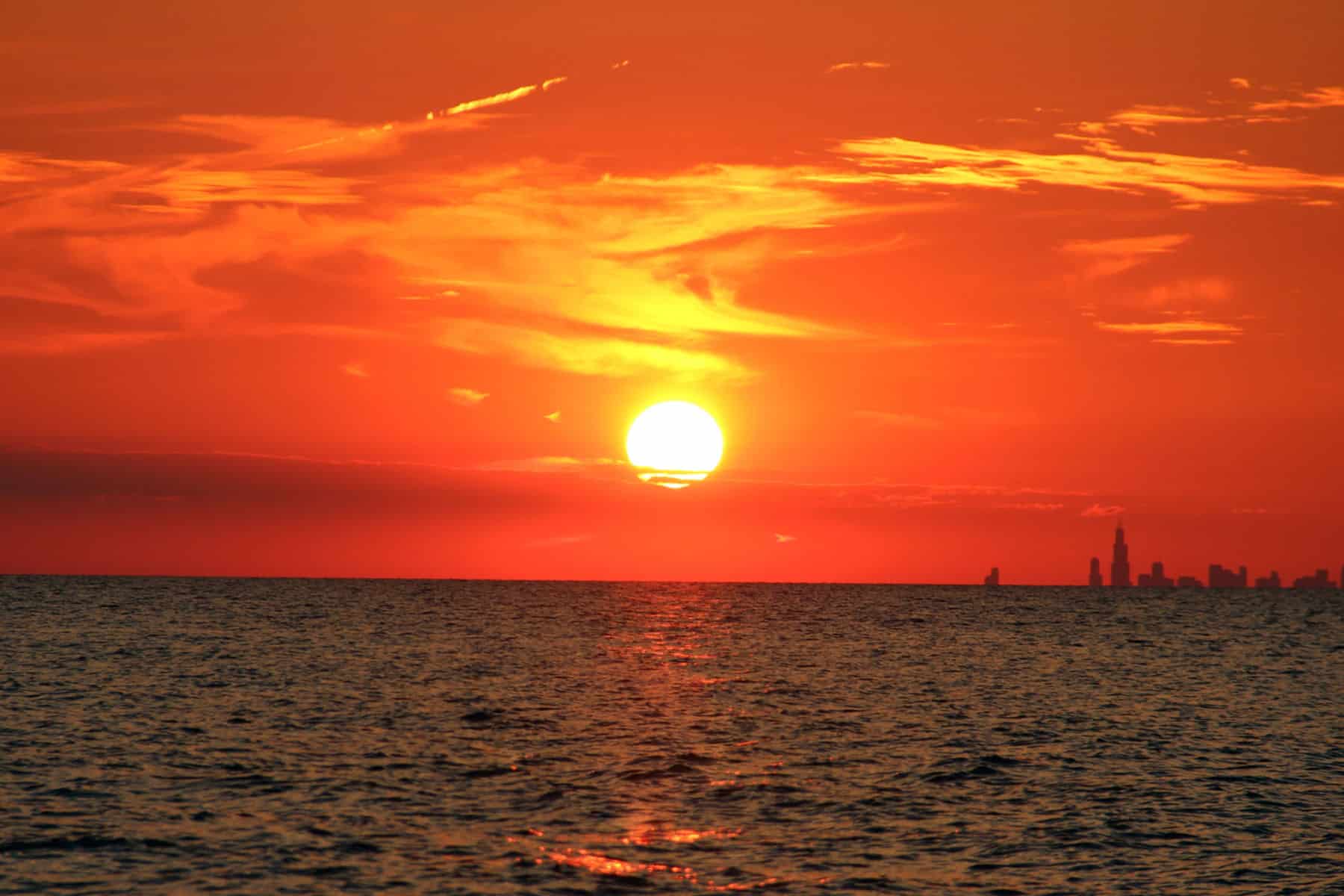
Table Of Contents: National Parks Near Indianapolis
Best National Parks Near Indianapolis
1. George Rogers Clark National Historical Park
Distance From Indianapolis: Two hours via I-70 W & US-150 E/US-41 S.
For almost 30 years, I taught high school history. What impresses me most about the field of history are the amazing stories of men and women whose contributions changed the course of human events. In doing so, they helped to bring about the country we have today.
The people we know, however, are few when compared to the people we don’t. When I asked my students what they knew about George Rogers Clark, I might have seen one hand raised.
I would call on that intrepid soul and he (or she) inevitably told me about Clark’s historic journey across America with his companion Merriweather Lewis.
Folks, that’s the wrong Clark!
.jpg/2560px-Views_of_George_Rogers_Clark_National_Historic_Park%2C_Indiana_(ae984d7d-1685-4a3b-abb4-1bc7424bcf4a).jpg)
Who Was George Rogers Clark?
A short history lesson is in order, but I promise there will be no homework.
Clark’s best remembered (not by my former students however) as the brave commander who led a small force of frontiersmen during the American Revolution through the freezing waters of the Illinois country to capture British-held Fort Sackville at Vincennes during February of 1779.
While this was his most important contribution to the cause of liberty, Clark also built forts on the Mississippi and Ohio rivers, repelled a British-led Indian attack in the Illinois country and led two major expeditions which destroyed the major Shawnee towns in the Ohio country. (Source: NPS)
Clark began his career as a surveyor before becoming a politician and a soldier. After the Revolutionary War, Congress appointed him as one of the commissioners to manage negotiations with the Native Americans in what was then known as the Northwest Territory.
He concluded a treaty with the Shawnee granting the United States sovereignty over all lands ceded by Great Britain.
Now if you’re interested in taking a deeper dive into the life and times of this fascinating man then I recommend George Rogers Clark: The Life and Legacy of the Revolutionary War’s Conqueror of the Old Northwest by Charles River Editors.
Things To Do At The Park
I always recommend that first timers start at the visitor center. There you can gather information on points of interest at the site. At this site, I recommend a 30 minute film, titled Long Knives. The film explores Clark, his march to Vincennes, and the attack on Fort Sackville.
From there you should check out the Memorial where you can see seven murals which tell the story of Clark and the Old Northwest along with a magnificent statue of George Rogers Clark.
As the National Park Service notes, the Memorial was a major feat of architectural engineering. It was built from 1931 to 1933. Workers assembled it piece by piece like a gigantic jigsaw puzzle. Today it stands as a testament to a man who did his part for the cause of freedom.

RELATED: 4 EPIC Iowa National Parks
2. Indiana Dunes National Park
Distance From Indianapolis: Two hours & 14 minutes via I-65 N.
Indiana Dunes National Park is a diverse and beautiful park located on the southern shore of Lake Michigan in the state of Indiana.
The park encompasses over 15,000 acres of sand dunes, forests, wetlands, and prairies, making it one of the most biologically diverse national parks in the country.
One of the most popular attractions at Indiana Dunes National Park is the beach. The park’s 15 miles of pristine sand dunes and shoreline offer opportunities for swimming, sunbathing, and beachcombing.
Visitors can also explore the park’s diverse ecosystems on foot, with over 50 miles of trails winding through the dunes, forests, and wetlands.

It’s A Park Rich In Cultural & Historical Significance
In addition to its natural beauty, Indiana Dunes National Park is rich in cultural and historical significance. The park is home to several historic sites, including the Chellberg Farm, which dates back to the early 1900s and provides visitors with a glimpse into the lives of early settlers in the area.
Another popular attraction at the park is the Nature Center, which provides hands-on exhibits and interactive programs to help visitors learn about the plants and animals that call the dunes home. The center also offers educational programs for school groups and other organizations, helping to foster a deeper appreciation of the natural world.
Whether you’re a nature lover, beach-goer, or history buff, Indiana Dunes National Park has something to offer for everyone. With its stunning scenery, rich cultural heritage, and abundance of recreational opportunities, it’s no wonder that the park attracts millions of visitors every year.
.jpg)
So Many Incredible Activities At Indiana Dunes
There are many things to do at Indiana Dunes National Park, including:
- Hiking: The park offers more than 50 miles of trails for hiking and exploring, including dunes, wetlands, and forests.
- Beach Activities: Lake Michigan provides opportunities for swimming, sunbathing, and beachcombing.
- Camping: The park has several campgrounds for overnight stays.
- Fishing: Fishing is allowed in Lake Michigan and some of the park’s inland waters.
- Wildlife Watching: Indiana Dunes is home to a rich diversity of wildlife, including over 350 species of birds, making it a great place for bird watching and wildlife observation.
- Picnicking: The park has several picnic areas, perfect for enjoying a meal or snack with family and friends.
- History and Culture: Indiana Dunes has a rich cultural history, and visitors can learn about the area’s history through ranger-led programs and exploring the park’s cultural resources.
- Ranger-led Programs: Indiana Dunes offers a variety of ranger-led programs, including hikes, campfire programs, and beach walks.
- Biking: Biking is permitted on designated trails throughout the park.
- Winter Activities: In the winter, visitors can enjoy cross-country skiing, snowshoeing, and sledding.
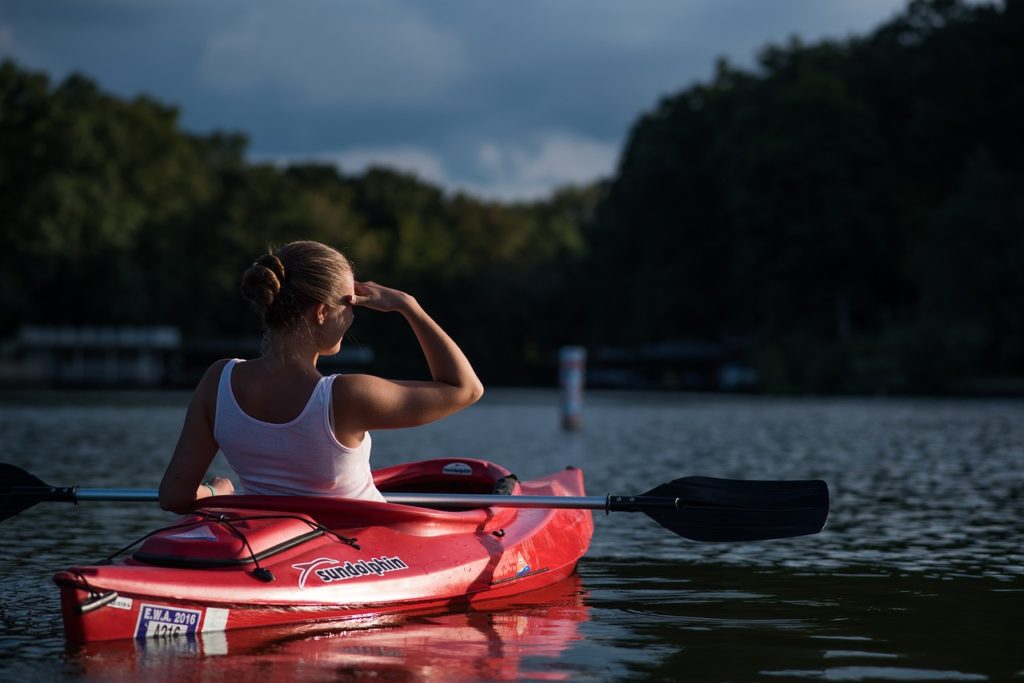
RELATED: 10 FASCINATING Facts About Indiana Dunes National Park
While You’re There You Can Explore A Century Of Progress
You’ll find some amazing historical sites, too, which I’m always keen to explore.
There are over 60 historic structures including a National Historic Landmark, the Bailly Homestead. Other notable sites include Camp Good Fellow, the Chellberg Farm and five houses from the 1933 Chicago World’s Fair.
The 1933 Chicago World’s Fair’s theme was a “Century of Progress.” In keeping with this theme you can see the House of Tomorrow, Florida Tropical, Armco Ferro, Wieboldt-Rostone and Cyprus Log House.
These places feature innovative building materials, modern home appliances and new construction techniques.
RELATED: 10 EPIC Ohio National Parks Worth Visiting
3. Lewis & Clark National Historic Trail
The Lewis and Clark National Historic Trail follows the route taken by the Lewis and Clark Expedition, also known as the Corps of Discovery, during their journey from St. Louis, Missouri to the Pacific Ocean and back between 1804 and 1806.
The trail covers more than 4,900 miles and passes through 11 states, including Missouri, Illinois, Kentucky, Indiana, Ohio, West Virginia, Pennsylvania, Virginia, North Dakota, Montana, and Oregon.
The Lewis and Clark Expedition was commissioned by President Thomas Jefferson to explore the western part of the United States and find a water route to the Pacific Ocean. Led by William Clark and Meriwether Lewis, the expedition set out from St. Louis in May 1804 with a team of 33 men, including French-Indian guide Sacagawea.
Over the next two years, they encountered many challenges, including rugged terrain, harsh weather conditions, and encounters with Native American tribes. Despite these difficulties, they successfully completed their mission, gathering valuable information about the western territories and laying the groundwork for future western expansion.
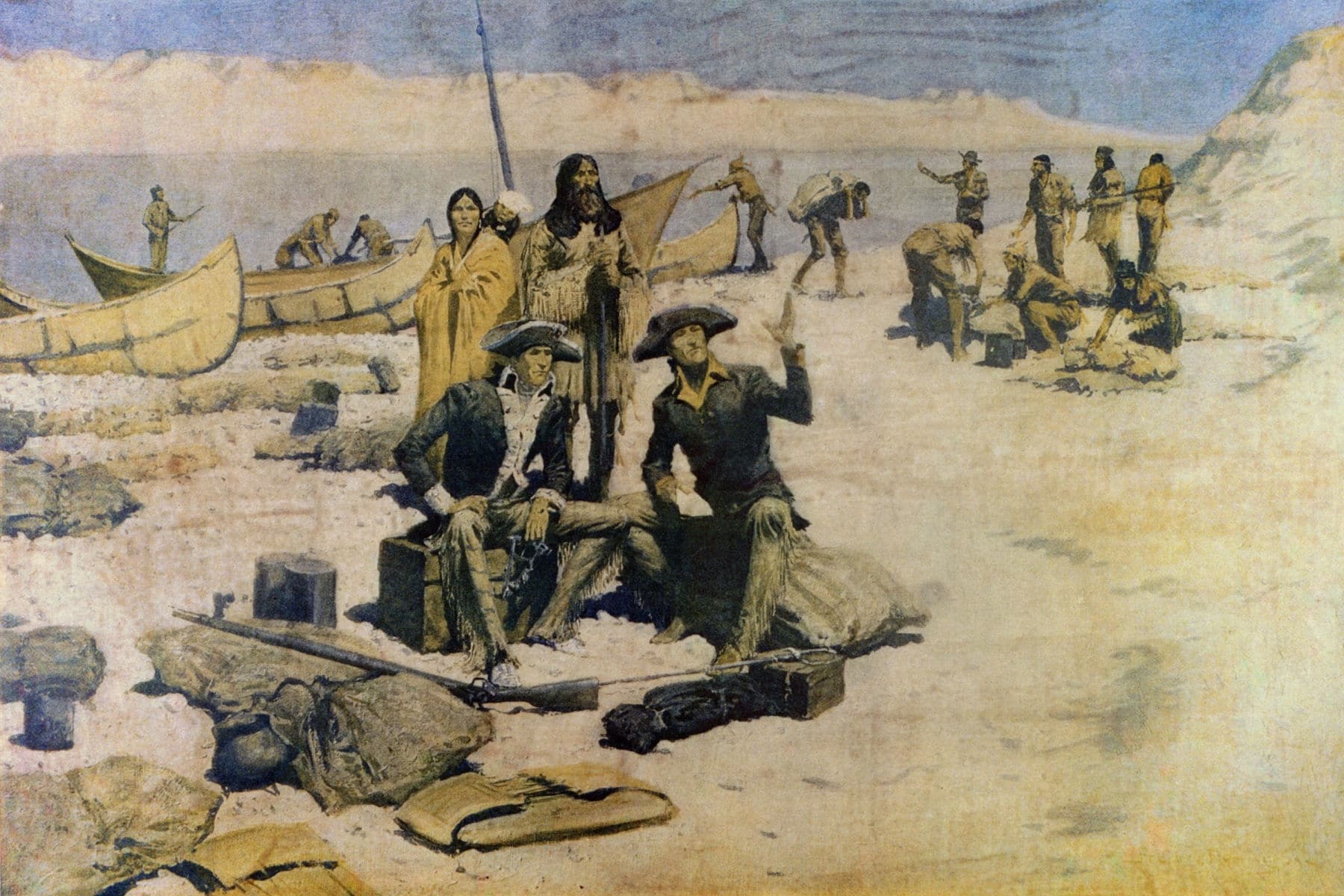
The Trail Serves As A Reminder Of The Expedition’s Accomplishments & Significance In American History
Today, the Lewis and Clark National Historic Trail serves as a reminder of the expedition’s accomplishments and its significance in American history. Visitors to the trail can follow in the footsteps of Lewis and Clark and experience the natural beauty and cultural diversity of the American West.
There are numerous visitor centers and interpretive sites along the trail, offering information about the expedition and its history, as well as opportunities for hiking, camping, and other outdoor activities.
The Lewis and Clark National Historic Trail is an important cultural and historical resource that provides a glimpse into America’s early western expansion and the bravery and determination of the explorers who paved the way.
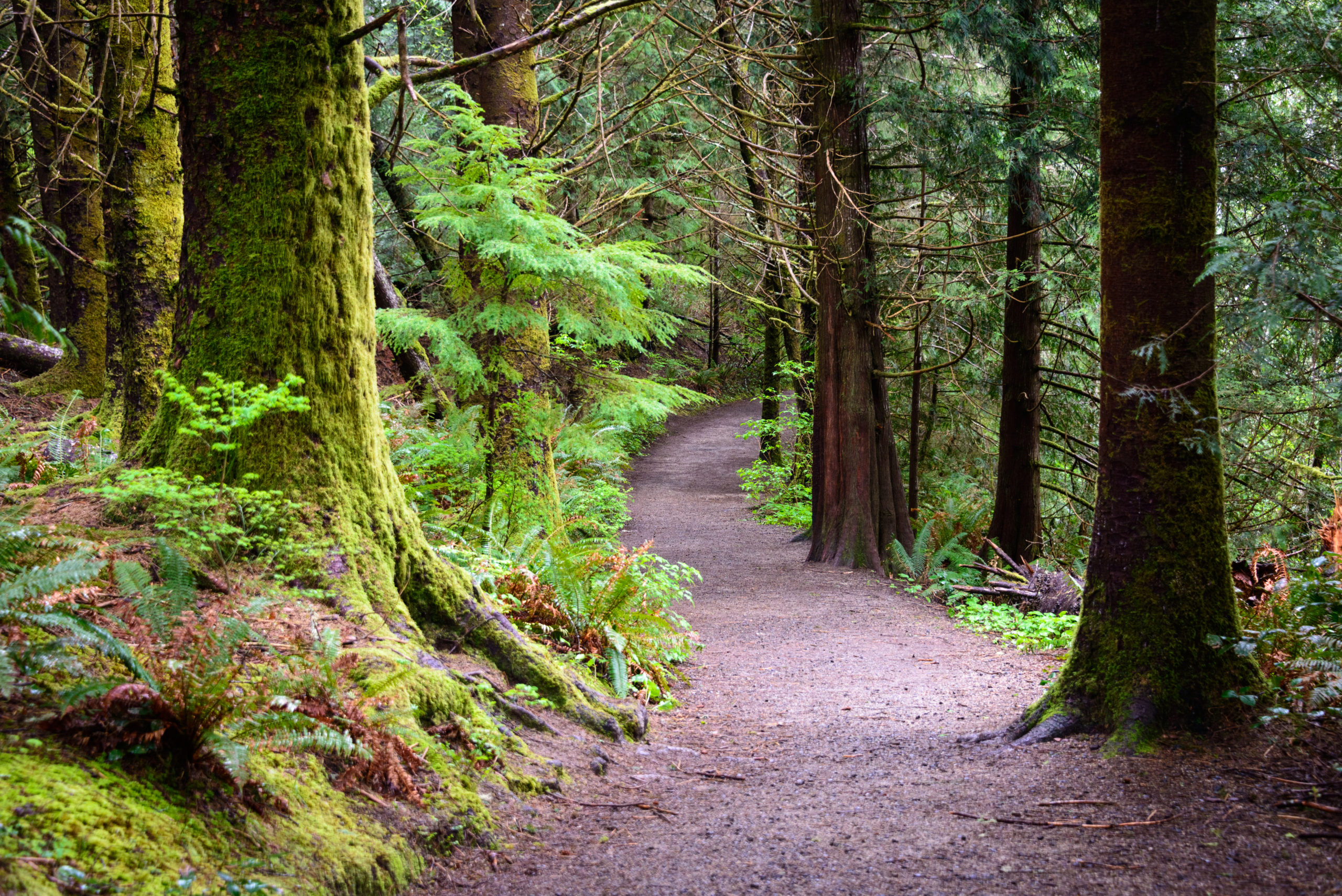
What Can I See In Indiana That’s Connected To Lewis & Clark
I’m so glad you asked. After all, our focus in this article is on Indiana.
In Indiana, this historic trail follows the Ohio River from the Indiana/Ohio border, to Clarksville, then southwest towards Indiana’s toe just south of Mount Vernon.
Merriweather Lewis historic 1803 meeting with William Clark has been honored for several years at the Falls of the Ohio State Park and the George Rogers Clark Homesite.
Now I know what you’re thinking. And, the answer is YES. William Clark descended from a line of adventurous men including William’s illustrious older brother George Rogers Clark.

RELATED: 6 GREAT Missouri National Parks (An Honest Guide + Photos)
4. Lincoln Boyhood National Memorial
Distance From Indianapolis: Two hours & 40 minutes via I-69 & US-231 S.
Indiana National Parks also include the birthplace of a man whom many historians regard as America’s greatest president.
In 2021, C-SPAN asked a group of these distinguished presidential historians to rank our nation’s presidents from worst to best.
At the top of their list, with a total score of 897 points, was Abraham Lincoln. George Washington and Franklin Roosevelt came in second and third respectively.
Why is Abraham Lincoln ranked as the greatest president of all time? Simply put, he saved the Union.
In the process of saving the nation, Lincoln managed to define the creation of a more perfect Union in terms of liberty and economic equality that rallied the citizenry behind him.
.jpg/800px-Abraham_Lincolns_Indiana_Home_(NBY_416218).jpg)
“His great achievement, historians tell us, was his ability to energize and mobilize the nation by appealing to its best ideals while acting ‘with malice towards none’ in the pursuit of a more perfect, more just, and more enduring Union.
-Michael Burlingame, Professor Emeritus of History
No President in American history ever faced a greater crisis and no President ever accomplished as much.”
Connecticut College
Lincoln Transformed The Presidency
Abraham Lincoln is widely regarded as one of America’s greatest presidents, and is known for his role in preserving the Union and ending slavery in the United States.
Lincoln was born in Kentucky in 1809 and grew up in Illinois. He began his political career as a Whig, serving in the Illinois state legislature and later in the U.S. House of Representatives. In 1860, he was elected President as a member of the Republican Party.
During his presidency, Lincoln faced one of the greatest crises in American history: the American Civil War. He was steadfast in his determination to preserve the Union, even as Southern states seceded and formed their own government.
In 1863, he issued the Emancipation Proclamation, which declared that all slaves in Confederate-held territory were to be set free. This was a pivotal moment in the abolition of slavery in the United States.
Lincoln was also known for his speeches, including the Gettysburg Address, which is widely regarded as one of the greatest speeches in American history.
On April 14, 1865, he was assassinated at Ford’s Theatre in Washington, D.C., by Confederate sympathizer John Wilkes Booth.
Lincoln’s legacy as a president and as a symbol of freedom and equality has had a lasting impact on American history and society. He is often remembered for his eloquence, his leadership during the Civil War, and his commitment to preserving the Union and ending slavery.

RELATED: 5 EPIC Illinois National Parks
Visit Lincoln’s Birthplace
There are many activities offered on a daily basis at Lincoln Boyhood National Memorial.
At the Memorial Visitor Center, park staff and volunteers are available to answer your questions.
While you’re there you should allow at least 45 minutes to tour the Memorial Halls, Museum and watch the orientation film.
The film, titled Forging Greatness: Lincoln In Indiana, is a 14-minute interpretive story which tells of the boyhood of Abraham Lincoln.
Next up, I recommend the park museum. It’s housed in the Memorial Visitor Center which was completed in 1943.
The tour is self-guided and includes twelve exhibits exploring the life of Abraham Lincoln.
Take A Deeper Dive
To learn more about this greatest of American Presidents, I heartily recommend Carl Sandburg’s Abraham Lincoln: The Prairie Years & the War Years.
By gleaning every possible reference from history, literature, and popular lore, Sandburg successfully captures not only the legendary president, but also Lincoln the man. He reveals exactly who Lincoln was, and what forces in his life shaped his personality.
Three other excellent biographies are: Team of Rivals: The Political Genius of Abraham Lincoln by Doris Kearns Goodwin, Lincoln by Donald Herbert David and And There Was Light: Abraham Lincoln and the American Struggle by Jon Meachum.
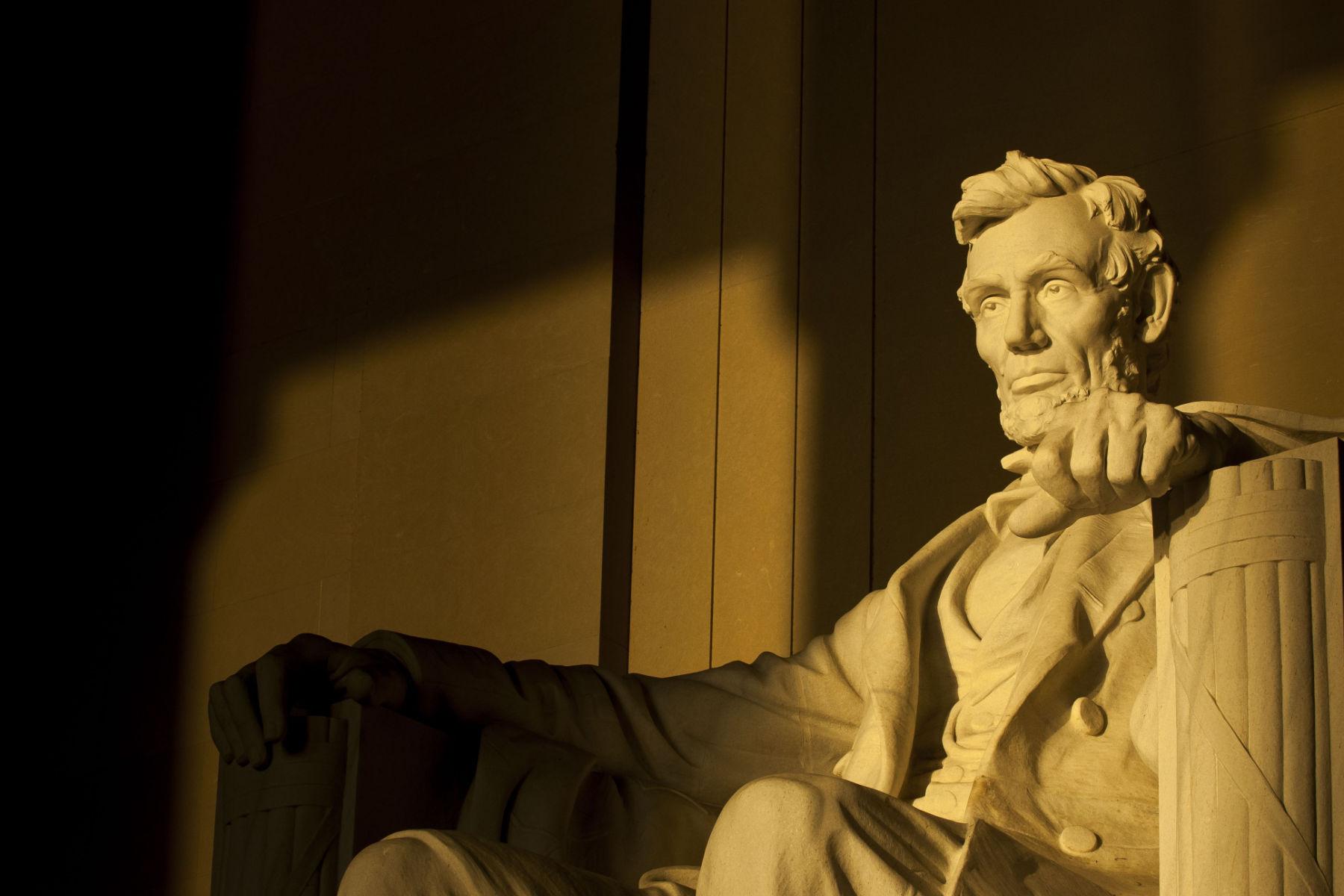
Things To Do At The Lincoln Boyhood Home
There are several things to do at the site, including:
- Tour the historic cabin: Visitors can tour the historic cabin where Lincoln lived from 1816 to 1830 and learn about life on the frontier in the early 19th century.
- Explore the interpretive center: The interpretive center provides exhibits and interactive displays that explore Lincoln’s life, his family, and his formative years in Indiana.
- Take a walk on the nature trail: The nature trail provides a scenic walk through the woods and fields surrounding the cabin, giving visitors a glimpse into the rural landscape of Lincoln’s boyhood.
- Attend ranger-led programs: The park offers ranger-led programs, including walks and talks, that provide an in-depth look at the history and significance of the site.
- Visit the memorials: The site includes several memorials dedicated to Lincoln, including the Lincoln Boyhood Memorial, which was dedicated in 1939, and the Little Pigeon Creek Church and Cemetery, where several members of the Lincoln family are buried.
- Enjoy educational programs: The Abraham Lincoln Boyhood Home offers educational programs for students and teachers, including field trips, workshops, and other educational resources.
Visitors to the site can learn about the early life of Abraham Lincoln and gain a greater understanding of the man who would become one of America’s greatest presidents.
RELATED: 10 BEST Civil War Sites In America
More National Parks Near Indianapolis
5. Indiana War Memorial
Distance From Indianapolis: Three minutes–It’s in Indianapolis!
The Indiana War Memorial (IWM) Plaza Historic District includes the 30,000 square foot IWM Museum complete with military equipment and artifacts, three parks, four fountains, and 25 acres of monuments, statues, and sculptures in the heart of downtown Indianapolis.
The IWM’s properties include the Indiana War Memorial, the Soldiers and Sailors Monument, the Indiana World War II, Korean War, and Vietnam War Memorials, the USS Indianapolis (CA-35) Memorial, the Medal of Honor Memorial, the 9/11 Memorial, and the Indiana Gold Star Families Memorial.
No state has a city with more monuments dedicated to veterans than Indiana’s capital, and no city in the country maintains more acreage honoring veterans than Indianapolis. It is also home to the American Legion National Headquarters, which is the largest veterans’ organization in the world.
The IWM Commission operates these facilities in pursuit of its primary mission: to commemorate the valor and sacrifice of the United States Armed Forces and to honor Hoosier veterans and Indiana’s role in the nation’s conflicts. (Source: State of Indiana, Indiana War Memorial)

National Parks Near Indianapolis FAQ
In Indiana, NPS operates three sites; Indiana Dunes National Park in Porter, George Rogers Clark National Historic Park in Vincennes and Lincoln Boyhood National Memorial in Lincoln City.
Why Trust Us About National Parks Near Indianapolis?
We’re Jim Pattiz and Will Pattiz, collectively known as the Pattiz Brothers (and sometimes the Parks Brothers) and we absolutely LOVE the national parks.
You should probably know that we don’t just make this stuff up out of thin air. We’ve spent our entire adult lives exploring and filming America’s national parks and public lands.
We’ve worked with the National Park Service, the Department of Interior, USDA, and the U.S. Forest Service for years creating films on important places and issues. Our work has been featured in leading publications all over the world and even some people outside of our immediate family call us experts on the national parks.
Meet The Parks Brothers
Map Of National Parks Near Indianapolis
List Of National Parks Near Indianapolis
- George Rogers Clark National Historical Park
- Indiana Dunes National Park
- Lewis & Clark National Historic Trail
- Lincoln Boyhood National Memorial
- Indiana War Memorial
To Learn More
- Pioneer History of Indiana: Including Stories, Incidents, and Customs of the Early Settlers by H. Monroe Bateman.
- George Rogers Clark: “I Glory in War” by William R. Nester.
- Undaunted Courage: Meriwether Lewis, Thomas Jefferson, and the Opening of the American West by Stephen Ambrose.
- Abraham Lincoln: The Prairie Years & the War Years by Carl Sandburg.
RELATED: 45 Best National Parks Books (Great Gifts For Park Lovers)
We Hope You’ll Follow Our Journey

Our goal here at More Than Just Parks is to share the beauty of America’s national parks and public lands through stunning short films in an effort to get Americans and the world to see the true value in land conservation.
We hope you’ll follow our journey through the parks and help us to keep them the incredible places that they are. If you’re interested in joining the adventure then please sign up below!

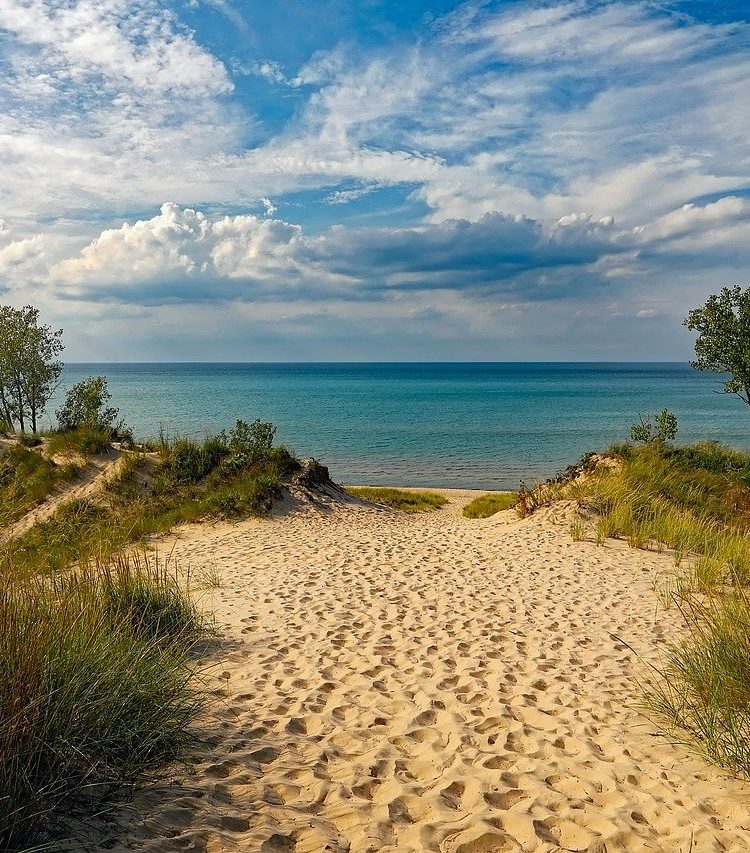
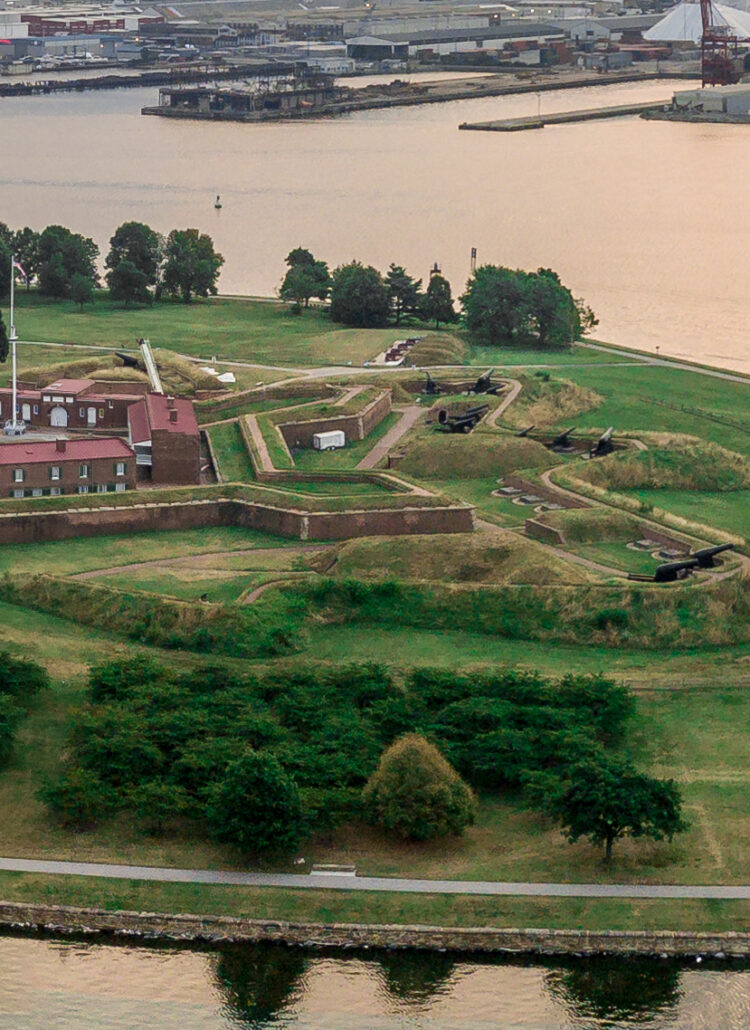


Leave a Reply